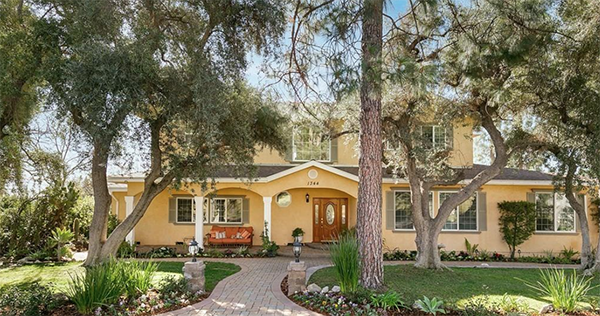News And Advice From The Leading Thousand Oaks Tree Trimming Company
With some much-needed rain hitting the Conejo Valley this week, it may be hard to imagine that spring is barely two months away. But it is and that means it’s time to think about fertilizing your trees and shrubs if necessary.

The first thing to realize, however, is that mature trees and shrubs growing in favorable soil conditions may require little or no fertilizer. That’s because — despite some people calling fertilizer “plant food” — it’s actually not food at all. Using photosynthesis, plants produce their own food in the form of sugars. Fertilizer simply provides minerals or nutrients needed for photosynthesis and growth. The key is when necessary minerals are lacking or absent in the soil — that’s when fertilizer can help by added missing ingredients.
Do Your Particular Trees Or Landscape Need Fertilizer?
The best way to decide if your landscaping or trees need fertilizing is by testing your soil. Here are a few options for getting your soil tested.
- The University of California: Offers a list of soil testing laboratories, with tests running under $100. Mail in or drop off your soil sample.
- The University of Massachusetts: Offers mail-in testing only.
- Do-it-yourself soil testing kits: Available at local stores such as Lowe’s or Home Depot. Under $20 but you get what you pay for — not terribly accurate.
Both professional soil testing and do-it-yourself kits are designed to reveal the acidity or alkalinity (pH) of your soil, along with the levels of nutrients that are present. The results may show that you need to add nutrients to make up for any deficiencies in the soil.
Do-it-yourself analysis
This is kind of like a self-checkup to decide if you need vitamins. You basically ask, how do I look and feel? With your landscaping, you simply look at it for signs of poor growth, including poorly colored leaves (yellow or pale green), small leaf size, leaf drop before autumn, stunted twig growth or twig or branch dieback.
Note, though, that these symptoms aren’t necessarily tied to low levels of nutrients in the soil, and fertilizing may not cure the problem. There are all kinds of other conditions that might cause these problems: Heavily compacted soil; insect-induced stress; diseases and weeds; or adverse weather conditions. If you have a tree that’s really showing signs of poor health, give us a call and we can try to figure out the problem.
Common Fertilizers
Many homeowners apply a complete fertilizer as a simple spring routine. Look at the fertilizer packaging for its description — it will typically have something like 16-4-8 or 12-6-6 in the description. This refers to the level of nitrogen, phosphorus and potassium in the fertilizer. In Southern California, we often have soil with low levels of nitrogen so a product with a level of 16 or 12 as the first number is usually in order.
The next thing to look for is whether the fertilizer is fast-release or slow-release. Fast-release or water-soluble fertilizers are less expensive than slow-release products. However, the nutrients in a fast-release fertilizer may leach quickly through the soil.
So plan now for your springtime maintenance and fertilizing. The reward will be healthy, beautiful landscaping and trees — which are not only a joy in themselves, but also add to the value of your home!

